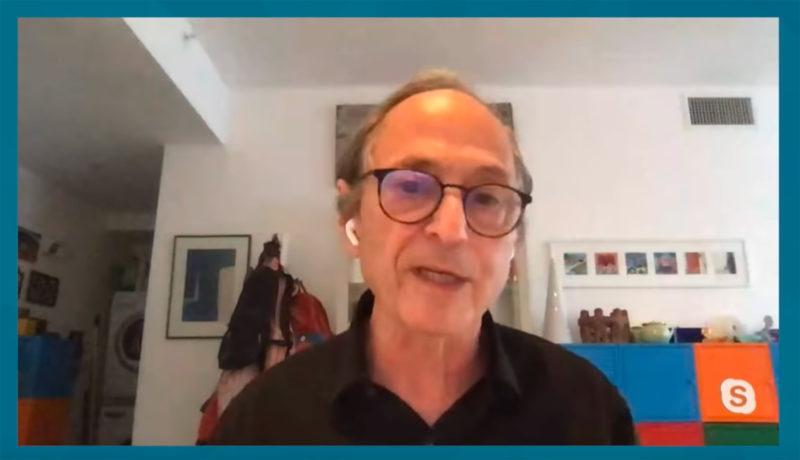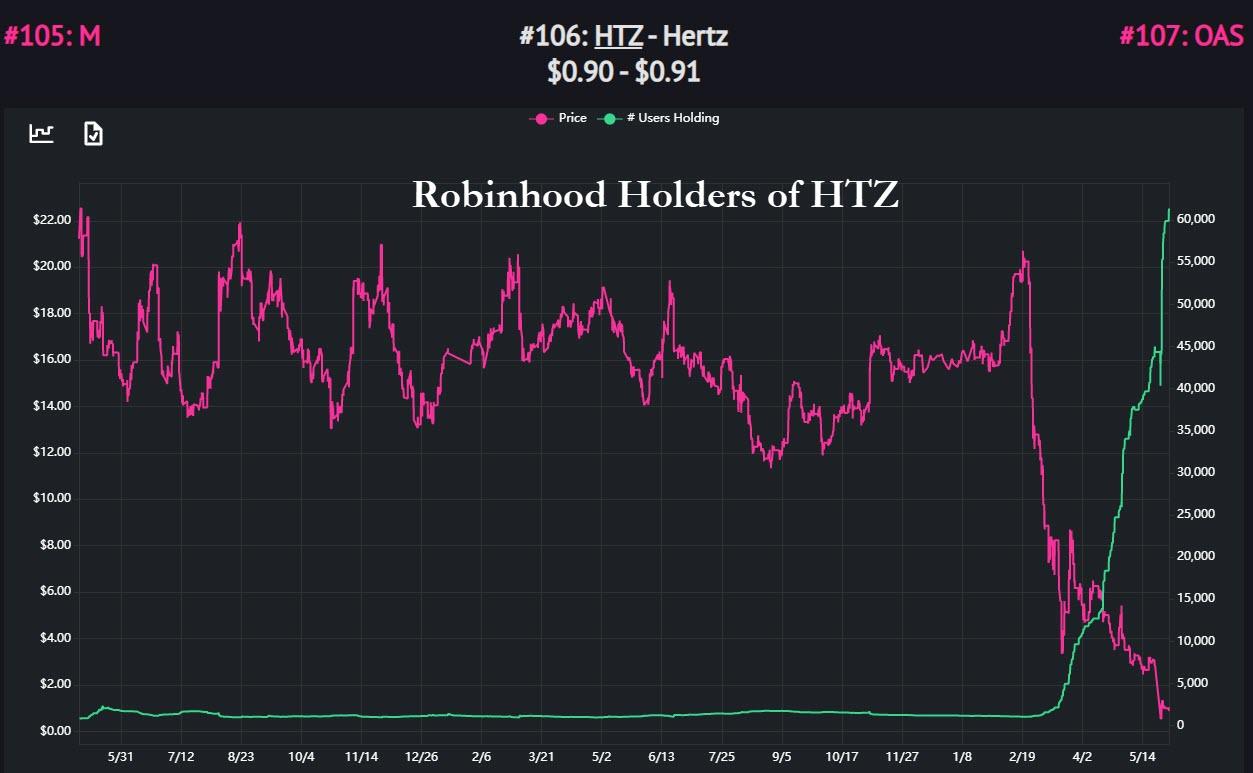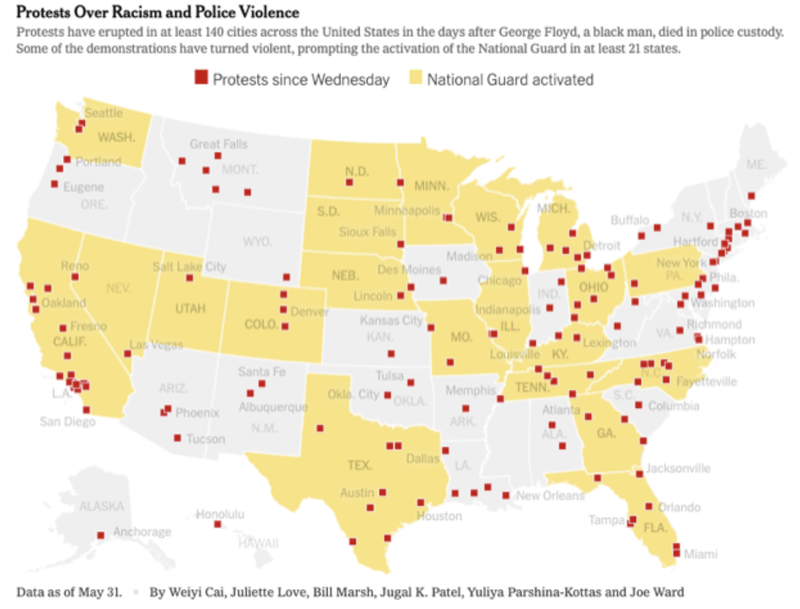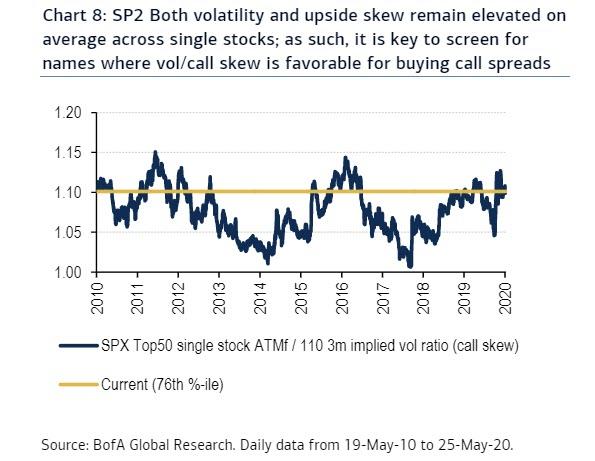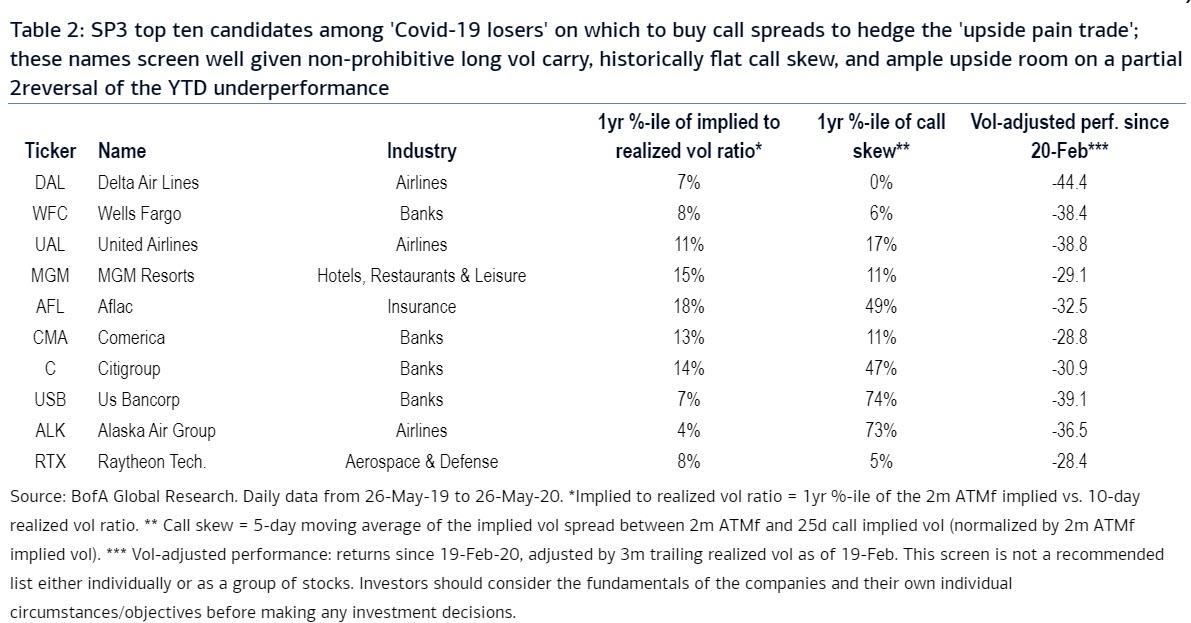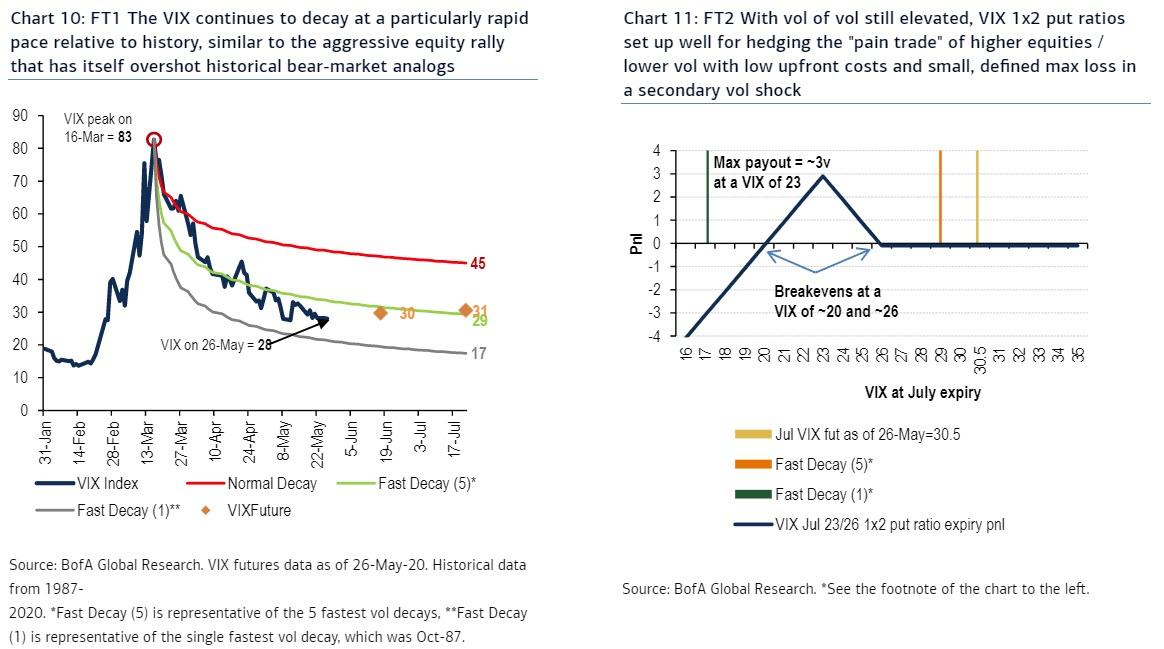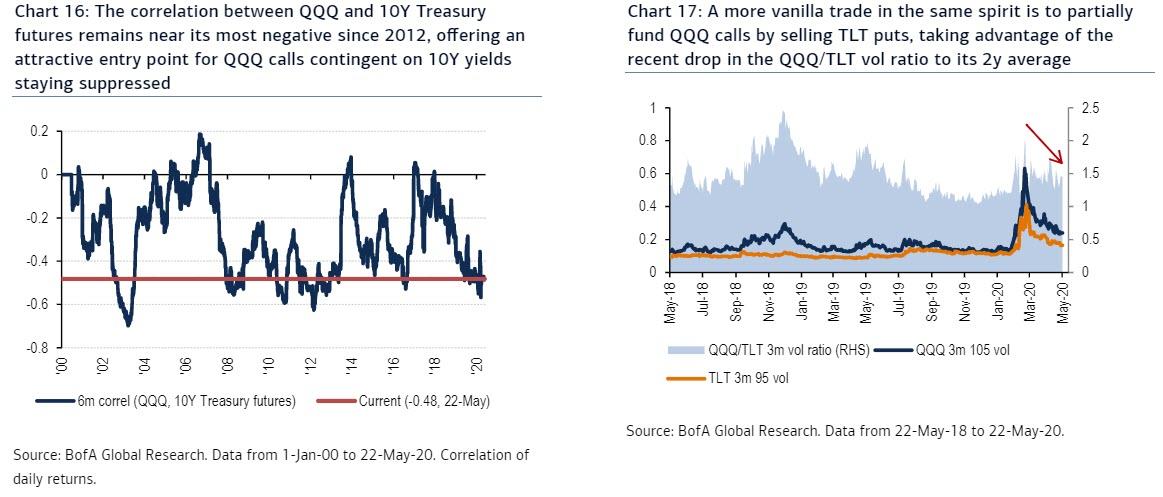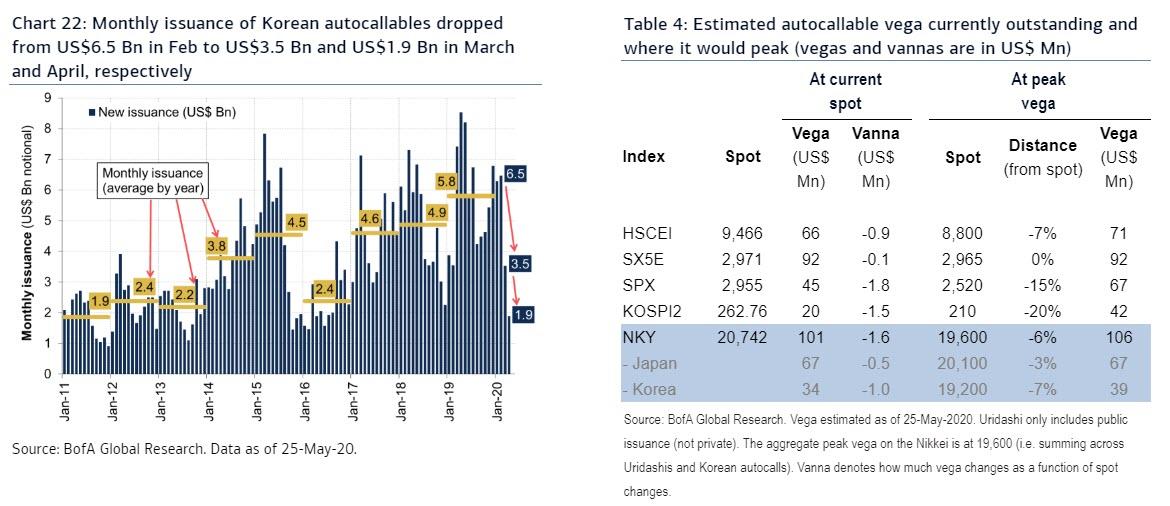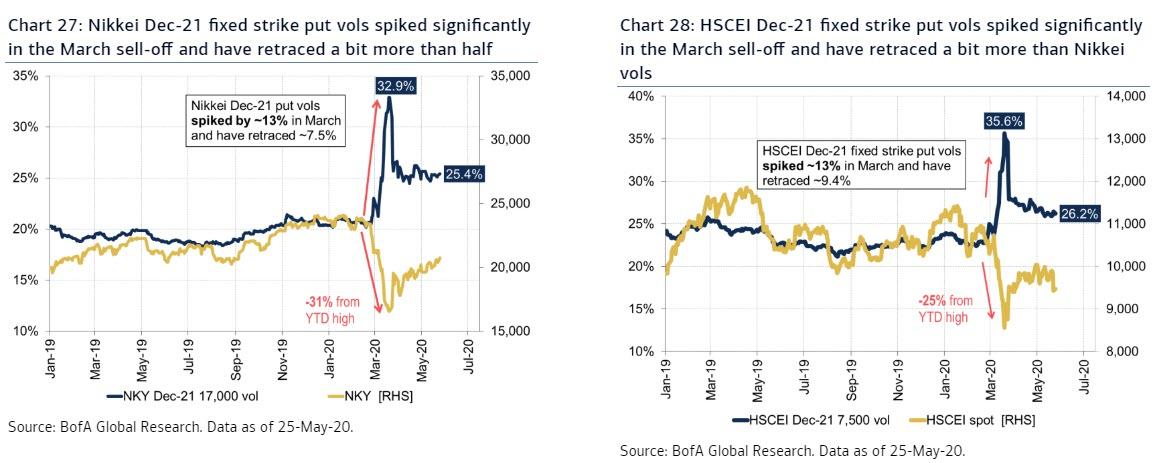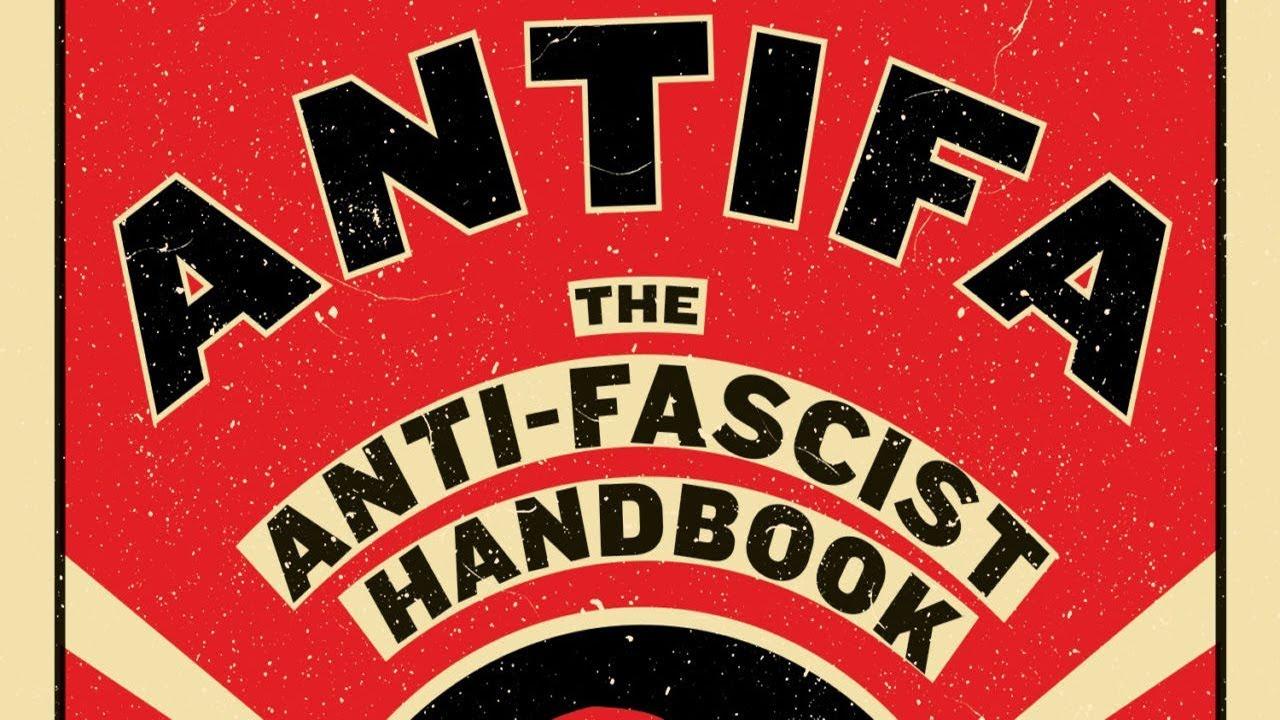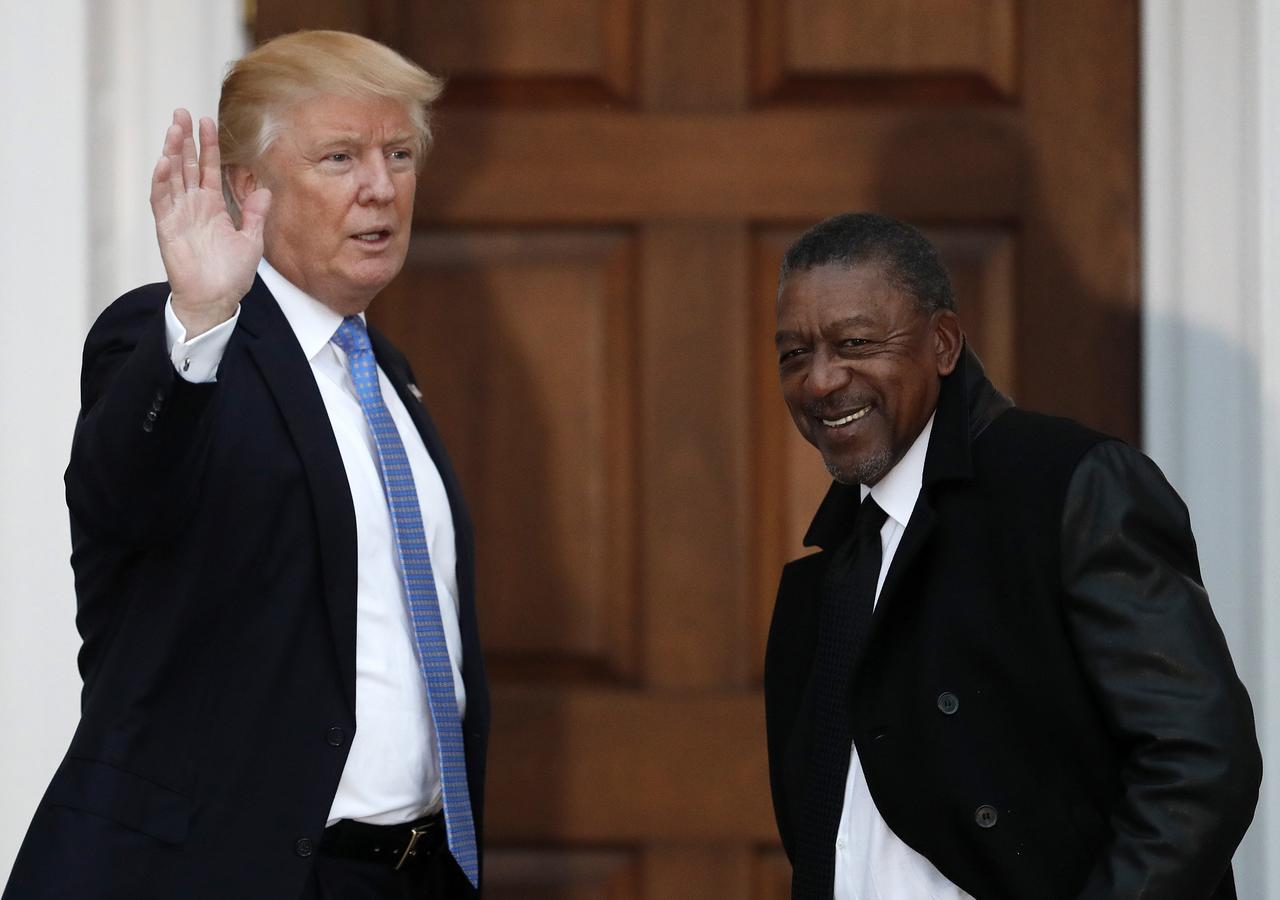Nobel Prize Winner: Lockdowns Are “A Huge Mistake”
Tyler Durden
Mon, 06/01/2020 – 15:05
Authored by Edward Peter Stringham via The American Institute for Economic research,
Michael Levitt is Professor of computer science and structural biology at Stanford Medical School and winner of the 2013 Nobel Prize in chemistry.
He has been a close observer of the pandemic and the response from the outset through its movement to Europe, the U.K., and the U.S.. Last month, speaking to the Unherd podcast and youtube channel, he offered some compelling thoughts and observers, and a striking conclusion.
Below is a transcript of the parts I found most relevant.
Q: So you noticed that the curve was less of an exponential curve than we might have feared, in those early days?
A: In some ways there was never any exponential growth from the minute I looked at it, there were never any two days that had exactly the same growth rate — and they were getting slow…of course you could have non exponential growth where every single day they’re getting more than exponential — but the growth was always sub-exponential. So that’s the first step.
Q: [In the UK] we talk endlessly about the R-rate — the reproduction rate — and apparently that began very high, maybe as high as 3, and … [we’ve now] got it down below 1 in the UK. Intuitively, if there’s a high reproduction rate, you should see that exponential curve just going up and up.
A: Well no, wait, okay. The R-0, which is very popular, is in some ways a faulty number. Let me explain why. The rate of growth doesn’t depend on R-0. It depends on R-0 and the time you are infectious. So if you are twice as long infectious and have half the R-0 you’ll get exactly the same growth rate. This is sort of intuitive, but it’s not explained, and therefore it seems to me that I would say at the present time R-0 became important because of a lot of movies — it was very popular — talked about R-0.
Epidemiologists talk about R-0 but, looking at all the mathematics, you have to specify the time infectious at the same time to have any meaning. The other problem is that R-0 decreases — we don’t know why R-0 decreases. It could be social distancing, it could be prior immunity, it could be hidden cases.
Q: You’ve been observing the shapes of these curves and how the R-0 number tends to come down and the curve tends to flatten in some kind of natural way regardless of intervention. Is that what you are observing?
A: We don’t know. I think the big test is going to be Sweden. Sweden is practicing a level of social distancing that is keeping children in schools, keeping people at work. They are obviously having more deaths in countries like Israel or Austria that are practicing very very strict social distancing but I think it is not a crazy policy. The reason I felt that social distancing was unimportant is practicing very very strict social distancing, but I think it is not a crazy policy.
The reason I felt that social distancing was unimportant is that I had two examples in China to start with and then we had the additional examples. The first one was South Korea (yeah), and Iran, and Italy. The beginning of all the epidemics showing a slowing down, and it was very hard for me to believe that those three countries could practice social-distancing as well as China. China was amazing, especially outside Hubei, in that they had no additional outbreaks. People left Hubei, they were very carefully tracked, had to wear face masks all the time, had to take their temperatures all the time, and there were no further outbreaks.
So this did not happen in either in South Korea or in Italy or in Iran. Now, two months later something else suggests that social distancing might not be important, and that is that the total number of deaths we’re seeing in New York City, in parts of England, in parts of France, in northern Italy — all seem to stop at about the same direction of the population so are they all practicing equally good social distancing? I don’t think so.
The problem I think is outbreaks occurring in different regions. I think social distancing that stops people moving from London to Manchester is probably a really good idea. My feeling is that in London, and in New York City, all the people who got infected, all got infected before anybody noticed. There’s no way that the infection grew so quickly in New York City without the infection spreading very quickly. So one of the key things is to stop people, who know that they’re sick, from infecting the others. Here again, China has three very, very important advantages that are not high-tech that don’t involve security tracking of telephones.
What they involve is, number one, the tradition in China for years, of wearing a face mask when you’re sick. As soon as the coronavirus started everybody wore a face mask. It doesn’t have to be a hygienic face mask it just has to be a face covering to stop you spraying saliva, micro droplets of saliva on somebody you talk to. The second thing in China is that because they were so scared of the SARS epidemic in most airports, stations where you pay tolls et cetera, there are thermometers. Infrared thermometers that that measure your temperature. So having your temperature measured at every single store entrance — either with a handheld thermometer or with something mounted on the wall — is something completely standard in China. And the third thing is that almost all payments in China are made not using a credit card, so in some senses it is very much easier there to practice social distancing. Of course, in addition they know where people are.
Q: What’s your view of the lockdown policy that so many European countries and states in America have introduced?
A: I think it is a huge mistake. I think we need smart lockdowns. If we were to do this again, we would probably insist on face masks, hand sanitizers, and some kind of payment that did not involve touching right from the very beginning. This would slow down new outbreaks and I think that for example they found as I understand, that children, even if they’re infected, never infect adults, so why do we not have children at school? Why do we not have people working? England, France, Italy, Sweden, Belgium, Holland, are all reaching levels of saturation that are going to be very, very close to herd immunity — So that’s a good thing. I think the policy of herd immunity is the right policy. I think Britain was on exactly the right track — before they were fed wrong numbers and they made a huge mistake.
I see the standout winners as Germany and Sweden. They didn’t practice too much lock down, they got enough people sick to get some herd immunity. The standout losers are countries like Austria, Australia, Israel that actually had very very strict lockdowns but didn’t have many cases. So they have damaged their economies, caused massive social damage, damaged the educational year of their children, but not obtained any herd immunity.
I think in many ways the European countries are fine. They didn’t need to have lockdown but they have all reached a high enough level of infection not to have to worry about further future attacks of coronavirus. The United States seems to be heading that way, they’re certainly that way in New York City but they still have a long way to go
Q: What you’re saying is that, you believe success — as we are currently measuring it which is as few cases as possible and as small a spread of the virus as possible — is actually failure?
A: I think if you really control your epidemic, for example, California, it’s now had lockdowns for six weeks, and wants another four weeks, they have so far less than a hundred deaths, that means they don’t have more (let’s say a hundred thousand) in people, that is not enough to give them significant herd immunity. They didn’t need to do all that lock down.
The lockdown is particularly hurtful in countries that don’t have good social infrastructure, countries like the United States and Israel. Many, many people have been really really hurt — especially young people. You know I think that everybody panicked — they were fed incorrect numbers by epidemiologists and you know this I think led to led to a situation.
There is no doubt in my mind that when we come to look back on this, the damage done by lockdowns will exceed any saving of lives by a huge factor. One very easy way to see this is, and again I am getting into a sensitive territory here, but economists have a very simple way of looking at death. They don’t count people. They come to the conclusion that if you’re 20 and you die that’s a greater loss than if you’re 85 and you die. It’s a hard issue, but in some ways are we valuing the potential future life of the 20 year old? Are we valuing the loss of more senior persons by what’s called daily disability-adjusted life years. Basically if somebody is in their 80s, has Alzheimer’s disease, and then dies from pneumonia (perhaps due to corona) that is less of a loss than if a 15 year old is riding his motorcycle bike and gets run over. This is an important way of looking at death.
It’s also you know, right now, the number of excess deaths is around 130,000 up to yesterday, [May 1st]. This is for all of Europe, for a population of around 330 million people. So an excess of 100,000 for this whole year, is actually not that much. In some of the worst flu epidemics we get to those kinds of numbers — sometimes it’s a bit more, sometimes a little bit less.
Now, I’m not saying flu is like coronavirus, I’m just simply saying that the burden of death of flu is like coronavirus. Especially when we correct for the fact that people who die from coronavirus are older on average than people who died from flu. Flu kills young people, it kills two or three times more people under 65 than does coronavirus. If we put those facts into the situation we find that the burden of death from coronavirus and Phillip Shaw will, in Europe, where we have good numbers in less than that of a very flu.
Another factor which has not been considered are all the cancer patients who aren’t being treated, or all the heart cardiology patients who aren’t being treated. I’ve got estimates of tens of thousands of people who are basically going to be dying because of lack of that treatment — and generally again the age group who die of cancer are younger than the age group who die of coronavirus.
There’s one very easy way to sort of summarize coronavirus. I put an article in the medium by the pretty famous British statistician Sir David Spiegelhalter of Cambridge [University] and he had said that the numbers coming from Ferguson suggested that we had to lose about one year of people. It turns out that I immediately wrote an article in the same medium and replied to him, saying that in fact the answer was actually one month, not one year. So basically my feeling is, and it’s being supported by the numbers, is that the amount of excess death you need to reach saturation, I’m not going to call it herd immunity, where the virus by itself stops, is on the order of four weeks of excess. Now to give you some idea in the European area where there is good monitoring, by a website called EuroMoMo, run out of Denmark, which covers about 300 million people. Every week in Europe in that area there’s around 50,000 natural deaths. So in four weeks there will be about 200,000 extra deaths in that year — and it looks like coronavirus in Europe where it’s no doubt that it’s the most severely hit area in the world — we’ll probably reach around 200,000 or 4 weeks worth.
Q: So what happens if what you’re saying is there’s a sort of statistical observation which is around four weeks of excess death and then the pandemic seems to peter out, or begin to flatten out. What does that mean policy-wise for these European countries then?
A: If we could protect the old people perfectly, then the death rates would be very, very low. So for example in Europe there were about 140,000 excess deaths in the last nine weeks. The number of those excess deaths who are younger than 65 is about 10%. So basically 13,000 of 130,000 deaths are actually under 65 years old and if we had simply been able to protect elderly people then the death rate would have been much much less. But the key thing is to have as much infection for as little possible death and also do whatever you can to keep the hospitals full but not overflowing. It’s a difficult calculation and the trouble is that in Sweden there’s no political concerns.
The trouble is is that in Israel and I know as well in the United States, everything is political and therefore nobody could say something like this. They would say, “Ah, but you are not valuing death — the thing that should have been done is for the media to stress to people that everyday somebody dies. These people are essentially in the same age band, and they die from Corona and other comorbidities, other diseases.
I’ve become a huge fan of Twitter. I’d never used twitter before and for me Twitter is the best discussion forum I had seen since I was a student at the Cambridge Laboratory of Natural Biology. Which is a 26 Nobel Prize winning lab. The best lab in the world. The Twitter discussion is phenomenal and I’m getting documents from Italy showing that many of the Covid deaths were either dead before they were tested or else they had up to three other conditions. There is nothing wrong with this, people die for all sorts of reasons, but the news should be stressing this and maybe they should be counting it as a 0.1 Covid death.
Countries seem to be racing to have as many Covid deaths as they could, and this is a huge mistake. In the flu season no one cares about these people. I mean, the total number of Covid deaths in Europe will be very similar to a severe flu season, and you know, this is serious. Flu is a serious disease. Maybe we should just shut down the economy during the flu season. I mean people should have been made to understand it. Unfortunately I think in Britain they started out wanting to go for herd immunity without too much lockdown, there was then a scary paper — which is likely to be retracted — which influenced Italy as well where basically it was claimed they were — [Interviewer interrupts]
Q: I know you had some specific queries about Neil Ferguson’s paper; we had him on the show last week. So, what did you think he got wrong in those models and predictions?
A: His work was on modelling, and around the 10th of February he had his first paper (that I saw) and in there he was getting a case fatality ratio of around 15%, whereas all my observations were saying that it was around three or four percent. So I was suspicious: I looked at the paper very carefully and in a footnote to a table it said “assuming exponential growth for six days at fifteen percent a day.” Now, I had looked at China, and never, ever seen exponential growth that wasn’t decaying rapidly so I was suspicious. My numbers were 10% of the numbers that Ferguson had obtained. I pointed this out, in a reply in the medium — which was out there, it’s clear nobody has ever seen it but it’s there, and I didn’t hide it it just didn’t get any likes and this said that it was much more like one month than one year and have an exchange with Spiegelhalta and Ferguson, where I tried to show my case.
But all I was doing was just simple proportionality using exactly the same profile of — different ages have different death rates, so there’s a profile saying that people over 80 have a certain fraction of the disk [deaths] people between 17 and 80 have a different fraction — just using that data… and simply saying we want the number of deaths that occurred on the Diamond Princess to be the same number that we found which was 7 or 8. If you do that, and then you apply that proportionality to Britain and the USA, you find that for Britain the half a million drops to about 50,000 and in the United States the two million drops to 200,000. Essentially a year dropping to a month.
Q: And so the the argument that is made here is that whether you believe the infection fatality rate is point three percent or whether you believe it’s point eight percent there is still a big chunk of the population, the majority population who hasn’t had been exposed to the disease or hasn’t had it and therefore if we just let it rip there will be many many tens possibly even further hundreds according to Professor Ferguson of thousands of deaths and that’s why it’s politically totally not an option to be at do anything other than follow this ultra cautious approach.What do you say to that?
A: The World Health Organization, and epidemiologists in general, can only go wrong if they give [politicians] a number smaller. If I said it’s going to be 1 billion deaths from coronavirus and it’s, “oh, you guys have done what I’ve said and there’s only gonna be a hundred thousands,” that is considered good policy. They overestimated bird flu by a factor of a hundred, or ten thousand in The Guardian. The Guardian wrote about this. Ebola was overestimated by a factor of 100 I think. They see their role as scaring people into doing something. I can understand that and there’s something to be said for it. If you could practice lock down with zero economic costs, and zero social costs — let’s do it. But the trouble is that those costs are huge, we’re gonna have fatalities from hospitals being closed down, additional children in trauma, businesses damaged — maybe less so in the UK because of the compensation policy — but certainly massive economic damage in the USA and in Israel, and in other countries. So you need to balance both of these things.
That is what I don’t think is responsible. In my work if I say a number is too small and I’m wrong or a number is too big and I’m wrong, both of those errors are the same. If I’m 10 percent too high or 10 percent too low that is okay. It seems that being a factor of a thousand too high is perfectly okay in epidemiology, but being a factor of three too low, is too low.
Q: I’m trying to think about what this means for the UK and for these countries that are trying to work out what to do next.Is your view then having looked at the numbers that if we had not implemented lockdown we would have seen a fall off anyway is that a fair summary?
A: We could have had smart lockdown. Sweden, for example, doesn’t allow gatherings of more than 50 people. I think a football game would be a really bad idea right now, because people shout and therefore spray saliva on everyone around them, and they could infect a lot of people. But you know Sweden is doing fine, their deaths again are very localized to nursing homes, like they are in England — it’s the same profile.
I think that you know again it’s Sweden so all the evidence suggests that. So my contradiction is the following: Britain, if they had done nothing would have had reported deaths. Now remember there’s a difference of reported death, my numbers are all reported. This would have four weeks of additional reported death when the numbers actually came in from what were the real axis death. My guess is they would be less than that so it would not have been double. It wasn’t in the month but maybe one and three quarters or so on. So that is my feeling — we’re seeing this in Europe we will know the answer in three or four weeks time. We will know for all of Europe exactly what the excess death of coronavirus was, right now it’s a hundred and thirty seven thousand.
Q: Do you find when you’ve been making these points — in the media that you received a lot of backlash? Do you think there’s a lot of political pressure, as an academic and as an academic you know they’re one of your colleagues in Stanford dr. Ioannidis has also put out studies that seem to become skeptical and has received a lot of political blowback.
A: I went on CNN once when he was CNN Vicky Anderson out of London. I appeared on Fox News a couple of times basically said this is all just common sense because I appeared on Fox News CNN wouldn’t have me anymore. So basically I have had very clear of things. I had one article in the Los Angeles Times which did great but since I was not saying things that were too extreme none of the East Coast newspapers wanted me, they quoted me, but they wouldn’t have me. What’s disconcerting is, a few of my academic colleagues — even relatives — were very upset with me. Because in my earlier writing I published a report, the medium report from the 22nd of March but on the 13th or 14th of March I distributed a 19 page report,and three academics got very upset with me. I think they were totally panicked, and they felt that if anyone thought this was true they wouldn’t lock down as tightly as they should, I’m in fact friends with all the people again, there are no hard feelings.
Q: Let me leave you with one final question: what’s your prognosis, what do you think is now gonna happen with this… what happens next?
A: There will be a reckoning. Maybe countries will start to see that they need governments that are not necessarily great in rhetoric, but actually thinking and doing. I often go back and think about what Socrates said 2,400 years ago: use your common sense instead of listening to the rhetoric of leaders. We have become very influenced by [rhetoric] that. I think this is another foul-up on the part of the baby boomers.
I am a real baby-boomer, I was born in 1947, and I think we’ve really screwed up. We cause pollution, we allowed the world’s population to increase three-fold, we’ve caused the problems of global warming, we’ve left your generation with a real mess in order to save a really small number of very old people. If I was a young person now, I would say, “now you guys are gonna pay for this.”
We have my family whatsapp and very early on I said this is a virus being designed to get rid of the baby boomers. You know I don’t know, I think my wife thinks this is going to be a take it to the streets thing,and we’re gonna have the young people on the street saying you guys have really screwed up it’s time to go. And I always joke with her, saying well at least I’ve made lots of friends among the young people, I’ll be okay.
But quite frankly you know I’ve had a great life, and I must say this to all the young faces in front of me. I have a grandson who’s 17. I’d much rather have young people live for a very long time. That said I do have a mother who’s a hundred and five years old living in London with my brother, she’s in lockdown and I talk to her by whatsapp every single day on FaceTime, and she’s fine. She still uses her phone and so on so you know these differences but…
You guys should get out there and do something don’t accept this anymore we screwed up too much
via ZeroHedge News https://ift.tt/3dpUrFw Tyler Durden
